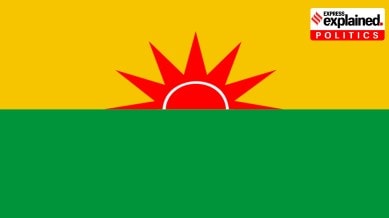ULFA peace accord: history of its 44-year-long insurgency, peace talks
Assamese people have their own, unique culture and language, and a strong sense of identity. Starting in the 19th century, however, as the region’s tea, coal and oil economy attracted migrants from all over, the indigenous population started to feel insecure.

The pro-talks faction of the United Liberation Front of Asom (ULFA) on Friday signed a historic tripartite peace deal with the Government of India and the state government of Assam. Here is the story of the outlawed insurgent outfit established in 1979.
Roots in Assamese anxieties
Assamese people have their own, unique culture and language, and a strong sense of identity. Starting in the 19th century, however, as the region’s tea, coal and oil economy attracted migrants from all over, the indigenous population started to feel insecure.This was further exacerbated by the Partition, and the subsequent exodus of refugees into the state from the erstwhile East Pakistan.
The competition for resources skyrocketed, resulting in a six-year-long mass movement. Eventually, the Assam Accord, seeking to “find a satisfactory solution to the problem of foreigners in Assam” was signed in 1985.
However, amidst all this, a group of more radical thinkers, led by Bhimakanta Buragohain, Arabinda Rajkhowa, Anup Chetia, Pradip Gogoi, Bhadreshwar Gohain and Paresh Baruah formed ULFA on April 7, 1979.
Four decades of bloodshed
The founders of ULFA wanted to establish a sovereign Assamese nation through an armed struggle against the Indian state. For over 44 years, this ‘struggle’ has been chequered with kidnappings and extortion, executions and bomb blasts, leading to tragic loss of life in Assam and beyond.
At the same time, the Indian state’s response has also been unsparing. In 1990, the Centre launched Operation Bajrang, leading to the arrest of 1,221 ULFA insurgents. Assam was declared a ‘disturbed area’, President’s rule was imposed, and the Armed Forces Special Powers Act (AFSPA) was invoked.
The government has also allegedly supported certain factions of ULFA, which has almost always been plagued with differences of opinion. In 1992, one faction, later christened as Surrendered ULFA (SULFA), offered to surrender and engage in dialogue with the government. Later, SULFA would allegedly carry out “secret killings” of ULFA insurgents and their family members, on behalf of the state government.
Yet, the ULFA has survived, in some part due to help from outside India. It still has camps Myanmar, and previously had camps in both Bangladesh and Bhutan. Lying deep in jungles and hilly areas, these camps act as launchpads for cross border operations, as well as shelter after the fact. Insurgents also use them as training bases for new recruits.
ULFA has links to other insurgent outfits in the Northeast and Myanmar, as well as Islamic terror outfits like Harkat-ul-Jihad-e-Islami, and Al-Qaeda. Paresh Baruah, ULFA’s self-styled military chief, reportedly met Osama Bin Laden, the mastermind of the 9/11 attacks.
It also has links to Pakistan’s Inter-Services Intelligence (ISI), which has reportedly trained ULFA insurgents in the past. ULFA openly supported Pakistan in its monthly newsletter Swadhinata during the Kargil War.
Towards peace
In 2005, the ULFA formed an 11-member ‘People’s Consultative Group’ (PCG) comprising noted intellectuals and Jnanpith awardee author late Indira Raisom Goswami. The committee mediated three rounds of talks before the ULFA walked out of the discussions and unleashed a new wave of terror.
Some ULFA commanders like Arabinda Rajkhowa, 2008 onwards, would again strive for peace talks with the government. However, Paresh Baruah was staunchly opposed to talks, and consequently “expelled” Rajkhowa from the outfit in 2012. The Rajkhowa-led pro-talk ULFA faction also “expelled” Baruah, paving the way for the last major split in ULFA. While Baruah floated his own ULFA (Independent), the majority of the outfit joined the peace talks under Rajkhowa.
The pro-talks faction, in 2012, submitted a 12-point charter of demands to the central government, which was finally responded to earlier this year. This was followed by a round of discussions between Rajkhowa’s faction and the Centre in April, and the tripartite peace agreement on Friday.
An incomplete peace?
“This peace deal is certainly a step in the right direction and will contribute to the peace and development of Assam,” Rajeev Bhattacharya, veteran journalist, who has previously interviewed Paresh Baruah, told The Indian Express. “How fruitful it will be depends on the government’s commitment,” the ULFA expert said.
While Bhattacharya declined to comment on how “complete” the deal is, he agreed that major question marks remain on how exactly it would work out. Assam CM Himanta Biswa Sarma has said he is keen on engaging with the anti-talks faction as well, but Baruah remains steadfast in his demand for Assam’s sovereignty.
Yet, after signing the agreement, Union Home Minister Amit Shah was confident that a “complete solution” had been negotiated. “This tripartite agreement is the beginning of a new age of peace for Assam,” he said.